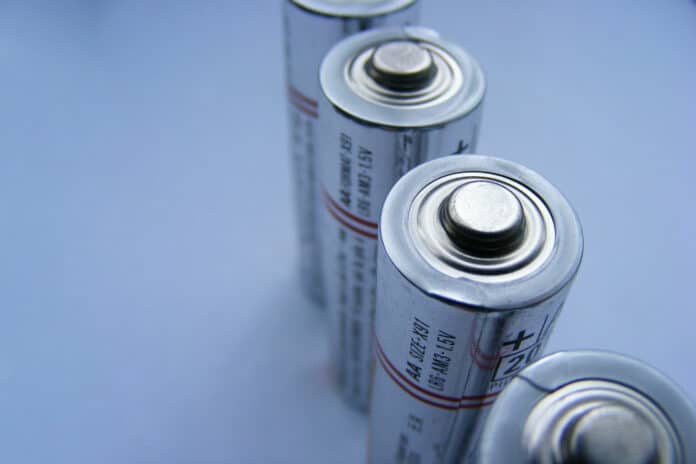Batteries have become an essential part of our daily lives, powering everything from mobile phones and smartwatches to electric vehicles. However, most batteries contain hazardous, toxic, and corrosive materials that can pollute the environment when disposed of in landfills or when thrown out elsewhere. Materials like lead, cadmium, and mercury can poison people and animals, cause soil and water pollution, and stay in the environment for a long time.
A team of researchers from Flinders University in South Australia and Zhejiang Sci-Tech University in China has come a long way towards producing the world’s first safe and efficient non-toxic aqueous aluminum radical battery. They have completed the first stage of developing these novel batteries.
Rechargeable aluminum-ion batteries (AIBs) have recently attracted lots of attention due to their high theoretical volumetric capacity, good safety, and abundant sources, making these batteries potentially a sustainable and low-cost energy storage system.
However, one of the major challenges for current AIBs scientists face is the slow movement of Al3+ ion complexes, which leads to AIBs with low cathode efficiency. Organic conjugated polymers are considered promising candidates for cathode materials for AIBs to address the ion transport issue, but their battery voltage output performance remains poor.
Stable radicals are a class of organic electroactive molecules that have been widely used in different organic battery systems. They offer several advantages, like higher sustainability in production, tunability of the electrochemical characteristics, and many structural possibilities and properties.
Previously researchers have developed radical materials for organic hybrid lithium-ion batteries (LIBs), sodium-ion batteries, and all-organic batteries. But these radical materials have not been used in emerging rechargeable aluminum-ion batteries due to lacking understanding of their (electro)chemical reaction in electrolytes.
The new aqueous aluminum radical batteries are made using special materials known as stable organic radicals, which contain a crucial element 2,2,6,6-tetramethylpiperidyl-1-oxy (TEMPO). Also, instead of using harmful chemicals, the new batteries use Lewis acid-dominated aqueous electrolyte Al(OTf)3.
Through in situ (electro)chemical characterizations and theoretical computation, researchers reveal for the first time an irreversible disproportionation of TEMPO in organic Al(OTf)3 electrolytes that can be steered to a reversible process when switching to an aqueous media. In the latter case, a fast hydrolysis and ligand exchange between [Al(OTf)3TEMPO]- anion and water enable the overall reversible electrochemical redox reaction of TEMPO.
These water-based electrolytes helped the researchers develop the first design of radical polymer aqueous AIBs that are fire-retardant and air-stable, delivering a stable voltage output of 1.25 V and a capacity of 110 mAh g–1 over 800 cycles with 0.028% loss per cycle.
Researchers hope to use biodegradable materials for the development of soft-pack batteries in the future to make the product safe and sustainable.
In conclusion, this work demonstrates the promise of using nonconjugated organic electroactive materials for cost-effective and safe AIBs that currently rely on conjugated organic molecules.
Journal reference:
- Shangxu Jiang, Yihui Xie, Yuan Xie, Li-Juan Yu, Xiaoqing Yan, Fu-Gang Zhao, Chanaka J. Mudugamuwa, Michelle L. Coote, Zhongfan Jia, and Kai Zhang. Lewis Acid-Induced Reversible Disproportionation of TEMPO Enables Aqueous Aluminum Radical Batteries. American Chemical Society, 2023; DOI: 10.1021/jacs.3c04203
